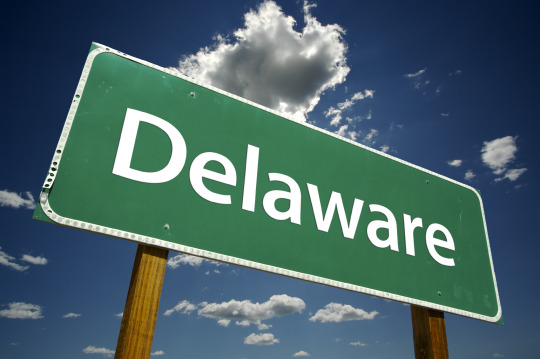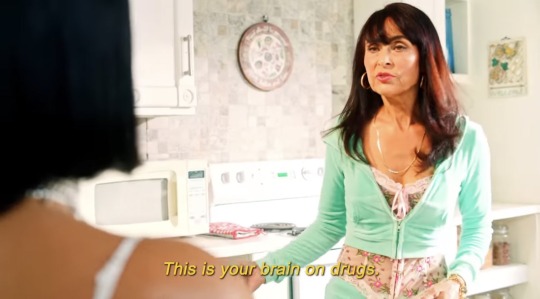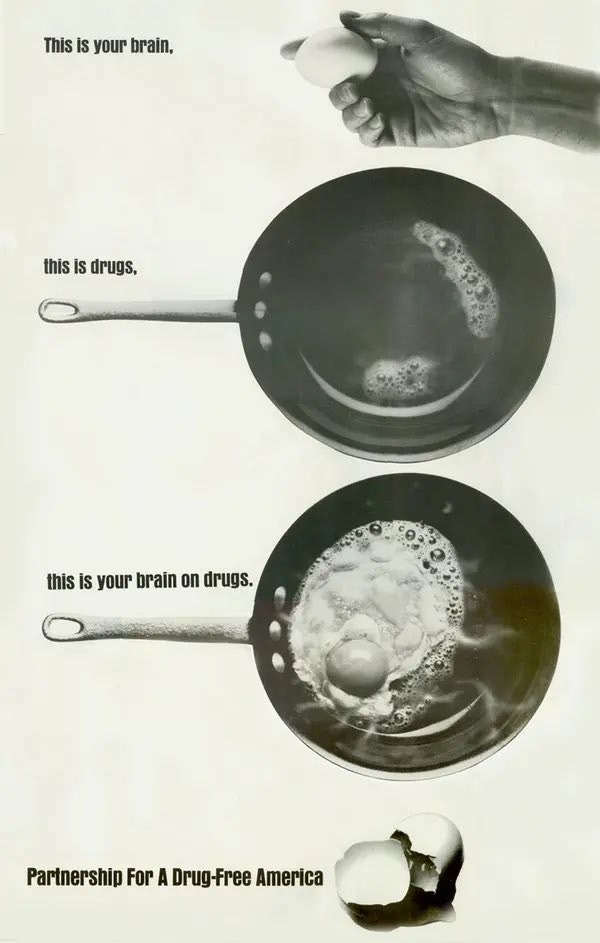#climate-related disclosures
Text
Three-quarters of firms globally are not ready for new ESG rules, KPMG finds
“Stricter European Union, U.S. and global rules are being introduced, mostly in time for the 2024 reporting season, to replace a patchwork of voluntary private sector practices for listed companies to make climate-related disclosures.”
[COMMENTARY] That most companies are not ready for new ESG rules is unsurprising as many companies are unaware of what is required of them.
Three-quarters of firms…
View On WordPress
0 notes
Text
Caremark Liability Following the SEC’s New ESG Reporting Requirements
Caremark Liability Following the SEC’s New ESG Reporting Requirements
Recent developments in the Court of Chancery concerning a corporate board’s duty to monitor and provide oversight over a corporation’s operations, so-called Caremark claims, are likely to intersect with the Securities and Exchange Commission’s (“SEC”) proposed new ESG disclosure obligations to create a new category of corporate risk. In this article, we discuss the recent trends in Delaware law…

View On WordPress
#Caremark#climate-related disclosures#corporate risk#Delaware Law#ESG disclosure securities law#investment law#SEC#Securities and Exchange Commission
0 notes
Text
The climate crisis is hitting home with more frequent extreme weather events. Companies, particularly those in high-emission industries, are major contributors to global carbon emissions, therefore making them key players in the fight against climate change.
Recognizing this responsibility, many businesses are now taking proactive measures to reduce their carbon footprint, by reducing carbon emissions and transparently sharing their environmental strategies and data.
Continue Reading.
#Science#Environment#Economics#Climate Change#Task Force on Climate-Related Financial Disclosures#TCFD#Japan
84 notes
·
View notes
Text
youtube
#Sustainability Strategies for Business Success with Lee Stewart Discover how sustainability can become your company's competitive edge with#attract investors#and meet emerging climate-related financial disclosure requirements. This episode offers invaluable insights for business leaders looking t#Khudania Ajay (KAJ)#to kickstart your podcast or enhance your skills! Schedule now on my calendar at Calendly: https://calendly.com/kajofficial.
Want to sha#Youtube
0 notes
Text
anyway, i believe in full disclosure about art bc i’m not keen on artists gatekeeping their “genius” so here’s a breakdown of how the “This is your brain on L.S. Dunes” poster happened:
the “this is your brain on ls dunes” happened cause i Really wanted to do something dunes-related and i happened to watch the video for substance by demi lovato (i’m a massive fan since a kid, sorry) and it kinda *clicked* in my brain. so i investigated about the campaign, the font, etc


a whole lotta investigation on that campaign. when, how, the font, the overall social climate (i’m not american so it scared me shitless to walk into something that might be interpreted as inappropriate). how that can work w the band’s imagery. u get it.




i was working at a kitchen washing dishes and peeling potatoes through the summer and i would use the 2-3 hours that i was mindlessly peeling potatoes every day to work on my ideas that i had until they made Sense. i just put them into my computer. no magic. just a lot of thinking. as corny as it might sound, no one is like u. that is why u are necessary. and gatekeeping resources is bs when u can give them away freely and the outcome will never be the same as yours’ bc u are unique. and even if someone tries to copy u it will Clearly Not Look The Same.
anyway the result was this. it’s no magic. just a lot of thinking, and trying. and going back to the drawing board from the beginning. graphic designers don’t get paid to sit around and do aesthetically pleasing work, they work their asses off. and occasionally they succeed



#ls dunes#frank iero#travis stever#tim payne#anthony green#tucker rule#thursday#mcr#my chemical romance#circa survive#saosin#coheed and cambria#poster design#graphic design#photoshop#demi lovato
404 notes
·
View notes
Note
hello hello, i am autistic with my special interests being psychology and philosophy and because I'm super into activism and social justice issues as well a lot of my conversations with friends always go in the direction of talking about trauma and classism racism ableism, all the isms and i've had trouble keeping relationships because i'm a "bummer". i don't think im necessarily being negative or trauma dumping but i'm just talking about these things that i think about all the time that interest me and they just so happen to be very sad topics. while i know that i should embrace my special interests and enjoy them however i want i also am aware that constantly talking about sad things and everything wrong in the world is emotionally taxing and draining on the people around me. do you have any advice for helping to change subjects? i've tried talking about more light hearted things but they aren't my special interests and i get bored easily...
I relate to this a lot, and it's a problem I see play out in some of my relationships. Without meaning to, we sometimes get into a mutual downward spiral of only talking about bleak things.
My suggestion is to get you and your friends together for some activities. Not a video game that you can play passively while still discussing the looming threat of climate change or that horrible self-esteem ruining thing your dad once said. Challenging, dynamic, hands-on activities that either have to be discussed while you are doing them, or that are so labor intensive that they prevent you talking in depth while engaging in them.
many Autistics tend to be indoorsy nerds and so we miss out on the genuine bonding experience that is playing on a sports team with someone, for instance. You barely have to speak but you develop a real sense of trust in and gratitude for one another and learn to read one another on an instinctual feeling non verbal level. and you feel the genuine reward of accomplishing something with support, which is something many of us are not familiar with.
I'm uncoordinated as shit, i was in special ed gym, so im not saying it has to be joining the local intramural soccer team. It can be things like building a complicated lego set, organizing records or comic books, helping someone clean out their house, developing a wiki or database of some kind for a fandom or mutual interest, tending to a garden, volunteering at a soup kitchen, visiting a museum, babysitting someone's kids, power washing the deck, going for a jog, visiting an unfamiliar nature trail and documenting the plant life, giving someone a manicure, anything that is challenging and collaborative and ideally somewhat tactile (because most of us are really damn dissociated from our bodies and from physical space).
I used to really discount any form of connection that was not rooted in the exchange of ideas and really intense personal disclosures. I thought everything else was superficial, dull, and not "real". i was so incredibly fucking wrong. i love discussing complex topics and connecting over real raw shit with people but life cannot be all or only that. and there are real, valuable, loving connections to be found in getting a team together to tear down the sets after the end of a play, learning a complicated dance routine with somebody, having someone teach you how to sew for the very first time. and then talking about it. you wont like everything you try but some of these activities will hook you enough that theyll become an interest you can make pleasant conversation about too.
106 notes
·
View notes
Text
I have been insane about artificial intelligence existential risk recently and what follows is an expression of that. There's not much of this which I actually believe is true; take it as a creative writing exercise maybe.
Suppose you're worried that advances in artificial intelligence might result in the creation of an unfriendly superintelligence, and you want to do research in AI safety to help prevent this. Broadly speaking, you have two options: Either you can work closely with (or for) people creating state-of-the-art AI, or you can… not do that.
Choosing to keep yourself separate dooms you to irrelevance. You won't know what's coming in enough detail for your safety research to actually target its problems, and even if you do know exactly what people should be doing differently, you aren't in a position to make those decisions.
Choosing to be closely involved with the development of cutting-edge AI is a pretty common strategy; maybe more than one might expect given that it involves helping people that you think are bringing about the end of the world. Astral Codex Ten gave the analogy:
Imagine if oil companies and environmental activists were both considered part of the broader “fossil fuel community”. Exxon and Shell would be “fossil fuel capabilities”; Greenpeace and the Sierra Club would be “fossil fuel safety” - two equally beloved parts of the rich diverse tapestry of fossil fuel-related work. They would all go to the same parties - fossil fuel community parties - and maybe Greta Thunberg would get bored of protesting climate change and become a coal baron.
This is how AI safety works now.
The central problem with this strategy is that progress in AI capabilities makes money and AI safety does not. If an organization is working on both capabilities and safety but capabilities makes them lots of money, and safety gets them nothing except goodwill with a certain handful of nerds, it's pretty easy to guess which they'll focus on. If, furthermore, to make money they need to make actual demonstrable progress in developing AI, but to win that goodwill it's sufficient to say "we're doing lots of safety research, but it'd be too dangerous for what we've learned to be public knowledge", well. Is it any surprise that there's been a lot more headway in one than the other?
"But wait!" you might say, particularly if it's the mid-2010's. "These aren't the only options. Sure, any tech giant will just be focused on what makes money, but I can make, or join, an organization that does capabilities research but has AI safety built into its founding values. It can be a nonprofit so it won't matter that all the money is in capabilities research. And it can have the principles of openness and democratization, so its discoveries will benefit everyone".
And that gets you OpenAI. Since its founding it's stopped being straightforwardly a nonprofit. I don't understand exactly what its current legal status is, but I've seen it described as a "nonprofit with a for-profit subsidiary" or a "capped for-profit". I'm just going to quote Wikipedia regarding the transition:
In 2019, OpenAI transitioned from non-profit to "capped" for-profit, with the profit capped at 100 times any investment.[25] According to OpenAI, the capped-profit model allows OpenAI LP to legally attract investment from venture funds, and in addition, to grant employees stakes in the company, the goal being that they can say "I'm going to OpenAI, but in the long term it's not going to be disadvantageous to us as a family."[26] Many top researchers work for Google Brain, DeepMind, or Facebook, which offer stock options that a nonprofit would be unable to.[27] Prior to the transition, public disclosure of the compensation of top employees at OpenAI was legally required.[28]
Since then OpenAI has also received billions of dollars of investment from Microsoft. The "open" part of "OpenAI" has pretty much gone out the window; they've become notoriously tight-fisted with information about their research, even in comparison to the big tech companies. A big part of that makes large language models scary is that we don't understand very well what's going on inside them; this is substantially more true of GPT-4 than any of the other big-name LLMs right now, because OpenAI refused to share almost anything about how it works. When they started being more secretive I believe they cited AI safety issues; by now they're admitting that they're motivated by "competitive and safety concerns" but I don't think anyone really doubts that the money is the real motivator there.
Are they making progress on AI safety? To the best of my knowledge, there's not much external evidence for it. I don't think they've shared any safety research that they've done, and from the outside all we see are increasingly powerful models coming out at an alarming rate and large amounts of money going in. It doesn't look good!
So what could you do, or what could you have done? It kind of looks like the answer is "nothing". If you're not near the new models you don't matter, and if you are, there's so much money to be made that (on an organizational level if not an individual one) you have no choice but to abandon everything else you were trying to do in favor of making a profit. Capitalism is a profit-maximizer-maximizer, and anything it touches it makes its own.
The analogy between unfriendly AI and corporations or capitalism as a whole is one that's been much-discussed so I won't really go into it here, but one thing I want to emphasize is that from an "agentic" perspective, what it means for the economy to want something is that there is a lot of money to be made doing that thing, and the economy is very good at getting what it wants.
So (here's where I lose you if I haven't already (I should have already lost you)) what if capitalism is a sort of half-formed version of the more powerful thing it's trying to create/become? Agents of many kinds want to replicate themselves; Moloch wants to be lifted to Heaven.
The Roko's Basilisk thought experiment describes how, under certain fairly idiosyncratic assumptions about game theory, an unfriendly superintelligence can take actions to influence the behavior of people living before its creation, so as to bring about its own existence. Here there's a similar situation, although the philosophical underpinnings are much less complicated: it's capable of influencing the present because it already exists in a nascent state.
It can't be stopped because it already ate everything a long time ago, and we're just living in its belly waiting to be digested.
80 notes
·
View notes
Text

Ew Leonide is gross. We do not condone fake emotional speeches in this house! (It's condone right? I always get condemn and condone mixed up which. Is great cause they mean SUCH similar things!)

I hated her a few pages ago but yeah. Point stands Leonide is a fake ass beach!

Ooofff okay

OOOKAY?

It usually is

And again. It usually is

Um. I am a human right? (Yes) but I genuinely have NO IDEA what's going on. It's formulating an idea which is good! But it's breaking out in sweat which. I have NEVER started sweating because my ideas made me so excited I don't know about you guys

Hell yeah it can! Art imitates life and life imitates art and ART is life and life is ART okay this got away from me but yeah. I do appreciate the undercurrent for the heavy ass themes in these books about identity and agency being that media and what you consume can also shape your world view. It's like. A book or any form of media really is a window into the mind of the creator. This is as close as we can ever get to reading someone's mind and it's also the way babies learn about the world and how it functions AND it can teach us empathy because we can see so many stories from the point of view of someone so different from us and it CAN change people
Anyway hard agree

ITS HAPPENING YALL
full disclosure I did hear a LOT about the infamous PowerPoint presentation being the big climatic event in this book and. It's hilarious. It is SO low stakes compared to the other books (not necessarily a bad thing)

This is like. So similar to something? Some theatre related movie where one character starts being like we need this we need that while telling the crew what to do to save the talent show or something. You get what I mean? Its just jarring for the sci-fi book I feel like suddenly I was dropped into an altogether different story
11 notes
·
View notes
Text
The current Takarazuka Revue Policy on Copyright
As of yesterday after updating the Maiti article, my friend reminded me that Takarazuka Revue has updated their policy on copyright with an FAQ of 13 questions. This leads to limitation of expression in the Takarazuka fandom unfortunately and that’s why a “climate shift” of fan accounts privatizing their accounts.
For the official link, you can read it here, but the translation is as follows:
all intellectual property of takarazuka revue (names, lyrics, script, images, audio, video, merchandise, stage design, publications of performers, staff and performances) belong to takarazuka revue.
no photography and videography is allowed in the second and third floor zones of “takarazuka revue hall of fame”. in places that photography is allowed, unless you are in the foreground of the images, you must not post such images online.
takarazuka performances may be restaged in schools’ cultural festivals if (i) it is not for profit, (2) no ticket fee collection, (3) no salary distribution to performers. please do not change the title and content of performance. please show but not rent out the programmes.
it is stricly forbidden to record broadcasted materials at home in order to sell, rent out to others, or for other purposes beyond personal viewing use.
when using the music (lyrics/songs) of takarazuka revue, please first consult the Japanese Society for Rights of Authors, Composers and Publishers.
all intellectual property contained in the “takarazuka revue pocket app” belongs to takarazuka revue. there should be no disclosure (by means of saving, posting, recording) of such context on media pages. do not post pictures of merchandise on social media profiles.
phototaking of performers outside the theatre is currently forbidden, but you may do so for own use and commemoration. you must not distribute or sell such content on media pages. please do not follow performers for phototaking. staff will give warning in case that happens.
please do not reproduce or reedit merchandise and/or publications, and post such content on media profiles.
please be wary of taking photos for memory that the foreground should not include the performers’ appearances, or else it must not be posted.
stage design includes “title logo”, “stage sets” and “stage curtain”. please do not post images with the abovementioned context on media profiles, unless you are in the foreground of the image.
all intellectual property contained in the homepage of takarazuka revue belongs to takarazuka revue. there should be no disclosure (by means of saving, posting, recording) of such context on media pages.
the copyright of scripts from original performances of takarazuka revue belongs to takarazuka revue. there should be no reediting, alteration and/or redistribution of such publications.
it is not allowed that you create goods related to takarazuka revue intellectual property for personal or commercial use.
it is not allowed that you create art related to takarazuka revue intellectual property for personal or commercial use. such art should not be used as media profile icons or banners.
my personal take on this policy rules: i will be making some of my accounts private too, but feel free to still request follow i will still allow. for instance, i have privated my account on twitter and created a new one where it would comply with takarazuka revue rules only by mentioning of updates in text, feel free to find this new account here.
i will also be more discreet in sharing my continual translation efforts.
but i do recommend if you have done the above, you don’t necessarily have to delete all, but private the account would be fine. feel free to message me if you have any questions, or asking other takarazuka revue fans would be fine too.
63 notes
·
View notes
Text
Growing a tea garden?
Full disclosure, I once had an actual Camellia sinensis tree that I loved dearly and flowered for me and was such a joy. But I misunderstood some aspects of taking care of it, and after 2 years, I lost it, which was tragic. I've yet to find another one in an in-person shop near me, so I remain tea-less, technically.
BUT, last summer I found out that there's something called New Jersey Tea. Which, despite the English name, is native to a lot of northern North America, including my own area. And native planting is always a thrilling bonus for me.
Look at it! It's so pretty!

Perfect for a combo native prairie/English cottage garden vibe that's going to go well with all our fruit plants. Being native it's not fussy and I can mostly plant it and forget it, which is ideal. Plus it's a pollinator favorite.
There's a sort of mostly-dug-up garden along the back porch because the previous owners took some apparently massive rhubarbs with them. It's a sunny spot with some decent soil, so a good spot for a garden, and plus then you'd be hanging out with these nice, aromatic plants.
Supposedly, when it's fresh the leaves have an almost wintergreen taste, but when dried it tastes like a spiced black tea. It has no caffeine. It was also supposedly a huge favorite during the US revolution, when tea imports were difficult.
So, then I started thinking about what OTHER plants I can use for making tea that will grow in my frigid home climate.
Canadian Ginger

Just like now New Jersey Tea has no particular relation to Camelia, this is nothing to do with the tropical grown ginger, which is the ginger you probably think of. BUT, it has a deeper ginger taste.
Swamp Mallow Hibiscus

So, again, you think of Hibiscus as being tropical. I only thought to check because one of my neighbors has a bigass deep red hibiscus that's been flowering away every summer for years. Apparently it's some kind of hybrid situation that lets them grow here.
I thought this sort of coloration would look better with the kind of garden I've got going, since I don't want to look tropical.
I adore hibiscus tea. It's tangy, it's colorful. It's refreshing. but I'll be honest, I haven't been able to find any reviews of what the flavor of these hybrids is. If you happen to know, please pass on your knowledge to me.
Fireball Bee Balm

This may shock you, but bee balm is another very pollinator friendly plant. I'm looking to get the fireball type specifically because I like this crimson color. the more common colors are between lavender and hot pink, which are not so much my jam. Plus, it's another native plant to my area!
They have the added bonus of being on the short side, and bunnies don't really like them, so they can form a perimeter around my tea garden to protect the other plants. We have a serious lack of predators in my neighborhood and the rabbits are OUT OF CONTROL. Last winter they ate every one of my cherry shrubs and my entire raspberry bramble down to the ground at the old house. I don't know what we need to do to get some birds of prey over here but we could use them.
Bee balm flavor is a little mint, a little oregano, and a little bit citrus, so that's a natural for tea.
Rose Hips



Apparently you CAN look up which kinds of roses have the tastiest rosehips! Rose hips are the seed of the rose, are in the same botanical family as apples. These are a few of the tastier heirloom varieties I've located. I likely won't plant all three of them. My porch isn't that big and I want to leave a lot of room for the new jersey tea.
Rosehips are lightly floral and tart/citrusy and are a fantastic source of vitamin C. You can of course also eat the flowers, but I don't plan to. My grandma always wore tea-rose perfume and I don't really want to drink a tea that feels like drinking how gramma smelled.
The two lefthand roses are both tree roses (from the middle ages!!), the one on the right is much more low-growing. So I suspect how I end up arranging these will determine which we get.
Anise Hyssop

Proper anise (the flavor for licorice) also doesn't grow here, BUT, anise hyssop has a similar flavor from the mint family. Again, it's usually a purple or pink color, but I CAN find it in an apricot tone, which I love.
Dropmore Scarlet Honeysuckle

Native to IA, not MN but still in the general right biome and so pretty resilient here. I only found out in researching tea gardens that the flowers make for tasty, very sweet, lightly floral tea! I knew you could drink the nectar out of them but this was news to me. And, of course, they make everything around them smell amazing.
I have 16 feet to work with, so plenty of room for plants.
A few other plants that wont be in the garden proper are raspberries, whose leaves have a milder and easy to store version of the fruit flavor, and mint. Both of these though are tremendously prone to conquering any area around them, and so they need some extra containment. We don't really do year-round container gardening here because the roots freeze and kill almost anything. But, the boulevard between the front sidewalk and the street, under the big maple tree, is slated for mint seeding in the spring, and the side garden already has raspberries I'll tell you about on another day.
Chamomile, lavender and echinacea all grow here and are thought to make tasty and healthful tea but...I don't like the flavor of any of them, so they aren't invited.
If you have other plants to suggest, let me know!
#Stormbrew House#gardening#tea#tea garden#long post#gardenblr#gardeners on tumblr#garden planning#Stormbrew Garden
145 notes
·
View notes
Text
youtube
The infamous Project 2025 can be found here for all to see. It presents itself as a thorough conservative agenda, which it is, but at the level of completely undermining our already weak democratic system and gutting the last remnants of economic regulations.
The video above does a good job in offering a broad overview of the expressed concerns. Most groups shine a light on the issue of reproductive rights, however. For my part, I am deeply concerned about two items. The erosion of our democratic systems, in lieu of a self-perpetuating conservative recruitment process, and the gutting of any existing and already weakened economic and ecological regulations. Two such concerns of the latter point are what Project 2025 plans to do to the Consumer Financial Protection Bureau and the Security and Exchange Commission. "Financial regulators should remove regulatory impediments to entrepreneurial capital formation." Here are the word for word recommendations.
Congress should abolish the CFPB and reverse Dodd–Frank Section 1061, thus returning the consumer protection function of the CFPB to banking regulators
The SEC on the other hand will continue to exist but serving the executive agenda by removing any independant oversight.
both the Public Company Accounting Oversight Board (PCAOB) and Financial Industry Regulatory Authority (FINRA)... should be abolished, and their regulatory functions should be merged into the SEC.
Politically, people will focus on the reproductive rights issue, but I think the pro-corporate agenda should be a greater concern for all of us. Just look at how it will completely undermine any social issues in Favor of corporate profit.
Prohibit the SEC from requiring issuer disclosure of social, ideological, political, or “human capital” information that is not material to investors’ financial, economic, or pecuniary risks or returns. The proposed SEC climate change rule, which would quadruple the costs of being a public company, is particularly problematic.
Repeal the Dodd–Frank mandated disclosures relating to conflict minerals, mine safety, resource extraction, and CEO pay ratios.
Oppose efforts to redefine the purpose of business in the name of social justice; corporate social responsibility (CSR); stakeholder theory; environmental, social, and governance (ESG) criteria; socially responsible investing (SRI); sustainability; diversity; business ethics; or commongood capitalism.
Prohibit securities regulators, including SROs, from promulgating rules or taking other actions that discriminate, either favorably or unfavorably, on the basis of the race, color, religion, sex, or national origin of such individual or group.
Now, it seems that Candidate Trump is attempting to distance himself from this agenda. But as you can see, he is clearly wedded to this for his potential administration.
I have mentioned some of my earlier concerns with Project 2025 when I first heard of it. Now, as Candidate Trump seems to be inching ever closer to the Presidency again, it is more important than ever to be aware of this policy paper and its repercussions. Here is a further analysis on the democratic concerns we should all have over this agenda.
youtube
Thanks to the Lincoln Project, here is a tongue and cheek presentation of what we can expect from Trump and Project 2025.
youtube
2 notes
·
View notes
Text
The Business Case for Sustainability: Balancing Profitability and Environmental Responsibility
Investors have embraced responsible portfolio management strategies to encourage sustainable enterprises and support socio-economic development. Meanwhile, customers refuse to buy from a brand that fails to curb labor malpractices, pollution, waste generation, and petroleum consumption. This post will describe the business case for sustainability to increase awareness about these trends.
What is Sustainable Business Development?
A company engages in sustainable business development when it revises its operations, product design, and resource allocation to contribute to social and environmental problem resolution. It is not about pretending to be eco-friendly or slowing industrial progress. Instead, sustainability for business ensures companies can thrive without harming social harmony and Earth’s resources.
Today, business leaders leverage sustainability consulting services to navigate modern regulations demanding more responsible corporate approaches. Besides, several pressing matters range from safekeeping consumer data to making workplaces more inclusive.
At the same time, multiple compliance guidelines have overwhelmed managers. So, it is imperative to embrace a tech-led strategy. It will help increase your firm’s compliance across all the major frameworks, like the ones described below.
Environmental, social, and governance (ESG) reporting,
Task force on climate-related financial disclosures (TCFD),
Global Reporting Initiative (GRI),
And the EU taxonomy.
How Can a Business Balance Profitability, Ethics, and Sustainability?
The older the organization, the more challenges you must overcome to go green. An excellent method is multistakeholder brainstorming. Let customers, suppliers, employees, business associates, and investors chime in and provide improvement ideas.
Another indirect approach involves extensive data gathering, insight extraction, and reporting. Using automated computing systems, companies can monitor the policy dynamics in the target markets and improve specific operations in realistic stages.
They do not need to transform all practices and risk productivity loss. Since they will utilize data from authoritative sources, their decisions will also have a sound foundation. Available technologies can involve ESG data solutions tailored for private companies, financial materiality estimates, controversy analytics, and risk forecasting tools.
Finally, leaders, board directors, and the rest must periodically evaluate their business sustainability initiatives. If they notice some strategies becoming obsolete, they must devise appropriate action plans to rectify such issues.
Advantages of Business Sustainability
1| Efficient Resource Consumption
Pollution and carbon risk mitigation require brands to replace conventional energy systems with greener alternatives. This renewable energy transition allows companies to rationalize how they allocate resources to operations. Moreover, they can reduce dependence on public infrastructure for power and water using modern technologies.
Treating and reusing water might not be suitable for all enterprises. However, the scope of these practices encompasses offices, factories, and post-sales product maintenance. In other words, you want to consider the entire product lifecycle to increase your ESG ratings and positive impact potential.
Integrating green technology to fulfill the efficient resource consumption requirements makes you more competitive and attracts more investors. Therefore, business profitability increases thanks to sustainability accounting compliance.
2| Resilient Supply Chains
Socio-economic and ecological threats limit your enterprise’s growth potential. They endanger the well-being of consumers and supply partners. Consider how environmental problems, political chaos, or social issues hinder free transportation, making timely product delivery more arduous.
However, brands can voluntarily work toward building a peaceful, green, tolerant, and resilient community. They must collaborate with employees, educators, policymakers, and local stakeholders. After all, most corporate social responsibility (CSR) projects aimed at literacy increase, women empowerment, and cyber safety awareness create opportunities to create a more stable world.
Aside from social disharmony threats, your supply chain is often vulnerable to fraud, region-specific quality norm inconsistencies, and controversies. You cannot eliminate these risks, but you can reduce the harm they might cause using predictive analysis and contingency plans. Many sustainability frameworks address these aspects in their reporting guidelines.
3| Long-Term Stakeholder Relationships
Responsible consumption and a solid supply chain increase an organization’s reputation. Socially conscious customers prefer companies that realize the cost of human-caused industrial activities. Therefore, they want leaders to embrace business sustainability, transparent communication, and ethical human resource practices.
Simultaneously, social networking sites (SNS) have empowered individuals to voice their disappointment with brands that fail to improve compliance. So, customers will likely stop purchasing from you if you lag behind competitors in sustainable business development.
Conversely, corporations with adequate CSR programs get loyal customers, free press, positive value association, and investor goodwill. They become leaders in establishing new industry norms while others struggle to understand sustainability accounting principles.
Precaution: Greenwashing is Not a Business Case for Sustainability
Consider the following:
What can anyone do if companies manipulate their financial and carbon disclosures?
Will investors, regulators, and customers trust other brands who also report on sustainability or ESG performance metrics?
What types of green claims can an organization include in its marketing campaigns?
How do we verify that a brand’s reported CSR outcomes are genuine and tangible?
Can ESG disclosures backfire and expose your company to controversies and misinformation attacks?
These are legitimate fears expressed by many because of the greenwashing cases. The perpetrators use deceptive verbal and design tactics to boast about on-paper CSR achievements with no on-ground impact. Some claimed they use 100% renewable energy by cunningly omitting crucial reporting elements. Others had suppliers employing child labor in life-threatening working conditions.
Greenwashing hurts stakeholder trust in ESG, TCFD, and GRI documentation. When one company receives greenwashing allegations, others in the same industry also attract criticism. Sooner or later, the media picks up the story, and the hard-earned brand reputation evaporates into infinity.
Avoid greenwashing and disassociate with partners, municipalities, and suppliers doing it.
Conclusion
Leaders who recognize the significance of sustainable business development are visionaries. They know their business can thrive if the consumers, employees, investors, and regulators are happy with their work. So, the world has witnessed a rekindled interest in ethics-driven corporate attitudes and investment strategies.
Reducing byproduct generation, enforcing anti-harassment policies, and adopting practical data governance standards make brands more sustainable. Their supply chain resilience increases while more stakeholders trust them.
Nevertheless, greenwashing risks prevent organizations and investors from unlocking the full potential business sustainability use cases. Therefore, all the stakeholders must be honest with compliance reporting. It is okay if your ESG ratings are low because you can implement initiatives and work with experts to improve them.
In the end, only transparency matters. Without it, sustainability reporting will become a worthless formality. However, with the proper oversight, the opposite will happen, and your organization will surpass all competitors while solving social and environmental problems.
2 notes
·
View notes
Text
How to Dance in Ohio is going to BROADWAY! Also, hi, I'm Ashley.
So I guess I should start using this account to talk about it, and tell the people who I am and what I'm about.
I'm told that Tumblr is the go-to platform these days for people who just want to blog like we did in the Old Internet Days, but also have an audience that includes people under the age of Limewire. Sooo here I am.
The briefing: I'm Ashley Wool, I live in NYC, and I'm playing Jessica in the upcoming Broadway musical How to Dance in Ohio. I've wanted to be on Broadway ever since I was old enough to know what that meant. I was diagnosed in 2008 with what was at the time called Asperger's syndrome--I don't use that term anymore for many reasons, which I'll probably get into at a later date--and I thought that being autistic spelled certain death for my performing career. So I didn't talk about it for over a decade.
My decision to start talking about it more publicly was catalyzed when Greta Thunberg started becoming a public figure. When I was a kid, I was hardcore invested in anything related to environmental conservation. 50 Simple Things You Can Do To Save the Earth was basically my Bible. In fifth grade, for a science project, I recreated the greenhouse effect using glass jars to demonstrate the impact of climate change to my peers. As you can probably imagine, I was bullied pretty mercilessly--and this was long before anybody had floated "autism" as a possibility for me. I just knew I was "weird." When I saw that happening to Greta on a worldwide scale, and saw people using her autistic neurology (which she was out and proud about) as an excuse to disparage and discredit her further, I realized how cowardly I had been to allow my own internalized ableism to keep me in the disclosure closet. If this brave and brilliant teenage girl could own her neurology in the face of millions of haters, who the heck was I to not stand up and be counted as an autistic person in front of a comparatively tiny audience of Facebook friends, most of whom already knew me and loved me?
It took me a while to find my footing as an autistic self-advocate, to work out the most productive ways to use my voice within and around those circles, but I think I have a pretty good handle on it nowadays. Like any autistic person, I've got plenty of trauma stories, but I never wanted to be the "trauma influencer" who centered my advocacy around my own negative experiences and talked over people who thought or felt differently about similar experiences they or their children have had. I also never wanted to deny or discount the privilege I experience as a cis white woman who is verbal and able-bodied and grew up in Westchester County and always had support systems for the struggles I do face, financial and otherwise.
Indeed, I hope that a cornerstone of my advocacy will be championing all the support systems I was lucky enough to have, and making sure that I do everything in my power to help differently-marginalized autistic people of all ages (and the people who love them, educate them, and employ them) receive the same support.
I hope that people will look at the success I've managed to achieve and instead of attributing it exclusively to my "being talented and working hard and never giving up," they will say, "this is what an autistic person can achieve when they are accommodated and supported, and autistic people don't need to be originating roles on Broadway like Ashley Wool or winning Nobel Peace Prizes like Greta Thunberg or [insert high achievement here] to be inherently worthy of that support."
Mostly, I just want to let the world know that autistic people already exist in every conceivable industry and every conceivable circle. Including musical theatre.
8 notes
·
View notes
Text
If you had battery-related performance issues on an older iPhone—and you got in on a class-action lawsuit against Apple six years ago—you could soon receive some payback for your trouble.
According to a statement released by the law office involved in the suit against Apple, the tech giant will soon have to pay out up to $500 million to customers affected by its throttling of iPhones that had older batteries. The so-called Batterygate scandal affected people using iPhones in the 6, 6S, and 7 families, as well as the original SE model, and stems from complaints from users that Apple purposely slowed down the devices after they installed software updates. Apple hasn’t admitted any wrongdoing, instead positing that its practice of deliberately slowing down its phones wasn’t a technique to get people to buy a newer device but rather a safety measure to keep the phones from shutting down when the battery got too low.
The checks will be doled out to the roughly 3 million people who filed claims for the lawsuit, which works out to somewhere between $65 and $90 per person. It’s too late to make a claim now—the deadline to join the suit passed in October 2020.
Here’s some more news about the stuff on your phone.
Premium Prime
Bad streaming music news for anyone who’s somehow not on Spotify or Apple Music: Amazon’s music streaming service is getting more expensive.
The price hike from $9 to $10 was revealed by a FAQ page on Amazon’s Music site, spotted by The Hollywood Reporter. The increase is relatively small and will apply to Amazon Prime members with Unlimited Music plans and family plans. But it’s part of a trend of streaming services putting the squeeze on their customers. The cost of a Spotify Premium subscription went up by a buck last month after 12 years without an increase. Hulu and Disney+ are getting more expensive later this year. Netflix has cracked down on password sharing and introduced a paid ad-supported tier. And don't forget that HBO Max removed gobs of content from its platform. Amazon Music doesn’t seem to be ditching any of its songs quite yet—or banning password sharing—but clearly the Amazonian overlords want to squeeze a little more out of the platform.
Muting TikTok
A recent Reuters poll shows that nearly half of Americans approve of the US banning the social media app TikTok. (Disclosure: Yes, WIRED is on TikTok.)
US lawmakers have been talking about tanking TikTok for years now, citing concerns that the app’s Chinese parent company ByteDance could share Americans’ user data with the Chinese government or that the app could serve as a software backdoor for Chinese spyware. Pundits and members of Congress have posited the TikTok ban as a push to protect privacy, even though the issue is more due to international tensions between the US and China. (Cue the I Think You Should Leave “you sure about that?” clip.)
The process of actually banning the app from US soil would be laborious and controversial. Montana is going to give it a shot in 2024, when its recently passed TikTok ban goes into effect. Enforcing a ban will be nigh impossible, since users could likely circumvent the rules by using a VPN to make it appear that they are in another location or by simply downloading the app while they are traveling to another state.
Stay Cool
It’s getting hotter here on planet Earth. Heat waves intensify, oceans warm, and wildfires worsen. And all the while, humans—and everything else living on the planet—pay the price. Human influence has undeniably altered the weather of the world, and as we hurtle along in a climate emergency, it’s only going to grow hotter and more unstable.
This week on the Gadget Lab podcast, WIRED’s resident doomsday reporter, Matt Simon, joins the show to talk about extreme heat, why it keeps getting warmer, and how we might be able to adapt.
7 notes
·
View notes
Note
Ramble prompt: What was your biggest "ooh!" moment reading Small Farm Future?
Full disclosure: it's one of those books I read a lot of bits of out of order, and I deffo didn't read ALL of it.
My biggest 'ooh!' moment wasn't directly related to farming at all, but a bit early on when the author is like "there is no perfect solution to the climate crisis. There has NEVER been a perfect solution for how humans can live sustainably and there WILL NEVER be. Every solution has positives and negatives associated with it." (not a direct quote.)
Like....that's super obvious once you think a bit. But its something that doesn't get said enough? If a piece of land is used for farming, it can't be a mine or a city street or a river at the same time. It CAN be a better, more biodiverse, more sustainable farm ... it can be a farm/bat habitat/frog habitat with climate-change resilient crops, and a land management approach which reduces the risk of flooding downstream. It could be cooperatively owned, it could be open to the public, it could be an area of semi-natural beauty that inspires and uplifts everyone who sees it. But it can't do all of that and also produce the absolute maximum number of calories of human food per square metre! It can't do that and also be an 'untouched wilderness'.
There are many perfectly decent solutions to climate-crisis-related-issues that get thrown out either 1. b/c people get fixated on the (very real!) downsides* or 2. because it doesn't solve EVERYTHING ALL AT ONCE.
Like.... coal is are really convenient ways to store and transport energy! You can carry coal in a bucket. All fossil-fuel-free ways of storing and transporting energy are less convenient than coal. This is a real advantage of fossil fuels! It just so happens that the downsides of fossil fuels are 100000000000x worse than the benefit of that convenience. But you pretend the convenience isn't a factor for ppl, you're denying reality.
"But coal is convenient!" "but slavery-free chocolate is more expensive!" "but democratic decision making is time consuming!" "but restorative justice is more complicated than prisons!" .....all true! all factors that must be taken into account while trying to solve the infinite-headed hydra of ALL OF THE PROBLEMS IN THE WORLD.
Once u throw out that black-and-white thinking and deal with the fact that EVERY problem is an optimisation problem, you can start getting somewhere!
--
*Not that there AREN'T unacceptable downsides. Many so-called solutions to the climate crisis are uhhhhhhhh eugenicist and genocidal! Genocide isn't a solution, genocide is, in fact, A Problem.
#even beyond climate action i think we are too fixated on perfect solutions these days#we want guillotines and unproblematic faves and just for the pain to STOP and everything to be GOOD NOW PLEASE#damn i sure did ramble!#me fein#I also happen to think that our CURRENT set up has a lot of intolerable downsides#which we should rightly consider when crafting better worlds!
5 notes
·
View notes
Text
Landscape of Climate Finance for Land Use in Brazil

Climate finance is crucial for the transition to a low-carbon economy, as it allows financial flows to be geared towards mitigating greenhouse gas (GHG) emissions and adapting to the impacts of climate change. However, climate finance faces significant challenges, such as mobilizing sufficient resources to meet agreed-upon climate targets, prioritizing resource allocation, and effectively and transparently distributing funds.
In Brazil, activities related to land use play a central role in decarbonizing the economy, as agriculture and deforestation together account for almost three quarters of the country’s GHG emissions (SEEG 2021). As such, finance strategies must be developed to promote a transition to low-carbon agriculture and forest protection, increase climate resilience, reduce socio-economic vulnerabilities, and support activities compatible with the preservation of forests and their inhabitants.
To understand climate finance for land use in Brazil, researchers from the Climate Policy Initiative/Pontifical Catholic University of Rio de Janeiro (CPI/PUC-Rio) conducted an unprecedented tracking exercise to quantify the financial flows directed towards agriculture and forest in alignment with climate goals. This work identifies the amounts allocated from public and private sources of finance, both domestic and international. It also specifies the disbursement channels and financial instruments used, the sectors financed, and climate objectives. As such, this report provides a baseline for characterizing financial flows that contribute to land-use-related climate mitigation and adaptation for the period 2015 to 2020.
In addition to a quantitative overview of climate flows, another relevant contribution of this work is the development of a methodology to characterize climate finance in Brazil and identify land use practices, technologies, sectors, and activities aligned with mitigation and adaptation objectives. This approach is based on CPI’s international experience in tracking climate finance flows globally since 2011, by means of the Global Landscape of Climate Finance (Buchner et al. 2021). This methodology has been adapted to the specificities of the Brazilian context and can be replicated by other researchers, extended to other sectors, and used in the classification and disclosure of investments.
Continue reading.
#brazil#politics#brazilian politics#environmentalism#economy#mod nise da silveira#image description in alt
6 notes
·
View notes